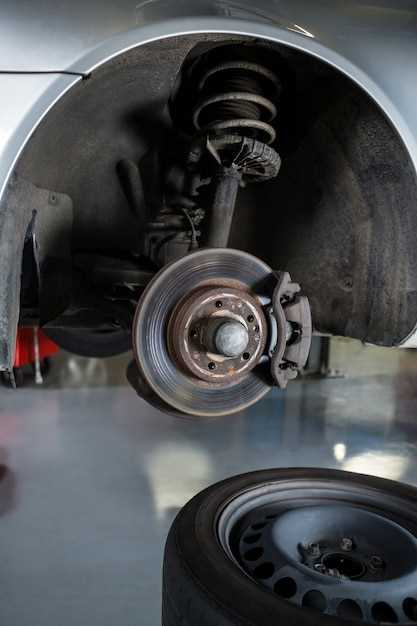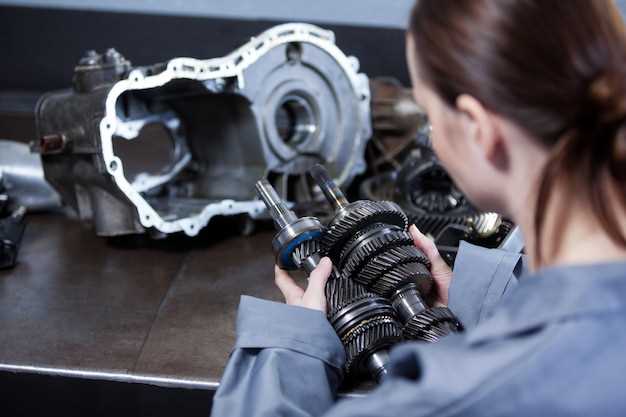

In the world of automotive performance tuning, the driveshaft plays a crucial role in transmitting power from the engine to the wheels. As enthusiasts push their vehicles to higher RPMs, the demand for strength and reliability in driveshaft components increases significantly. Upgrading driveshafts not only enhances performance but also ensures safety during high-speed driving conditions.
The original equipment manufacturers (OEM) driveshafts are often designed for standard use and may not withstand the rigors of high RPM applications. When subjected to extreme rotational speeds, these driveshafts can suffer from vibrations, flexing, and even catastrophic failure. Upgrading to performance-oriented driveshafts made from advanced materials and engineered for strength provides a vital solution for drivers looking to maximize their vehicle’s potential.
Performance driveshafts typically feature enhancements such as larger diameters, improved balance, and the use of lightweight yet strong materials like aluminum or carbon fiber. These upgrades contribute to reduced rotational mass, allowing for quicker acceleration and improved throttle response. Additionally, a properly upgraded driveshaft can help eliminate undesirable vibrations, enhancing stability and control during high RPM operation.
Assessing Material Options for Enhanced Driveshaft Strength

When upgrading driveshafts for high RPM performance, selecting the right material is crucial for achieving optimal strength and durability. Various materials can be evaluated based on their mechanical properties, weight, and cost to determine the best fit for specific applications.
Steel is a traditional choice for driveshafts due to its remarkable tensile strength and resistance to deformation under load. High-strength steels, such as chromoly, offer enhanced performance characteristics, providing a balance between weight and strength. These materials can handle higher torque levels, making them suitable for racing applications.
Aluminum is another popular option, especially for applications where weight reduction is critical. Aluminum driveshafts are significantly lighter than their steel counterparts, which aids in improving acceleration and handling. However, while aluminum exhibits good strength-to-weight ratios, it may not provide the same level of structural integrity as steel under extreme conditions. Proper design and engineering are essential to ensure that aluminum driveshafts can endure high RPMs without compromising performance.
Carbon fiber is increasingly becoming a favored material in high-performance environments due to its impressive strength and lightweight properties. Carbon fiber driveshafts offer superior resistance to torsional stresses and vibrations, making them ideal for high RPM applications. However, the high cost of carbon fiber can be a limiting factor for some enthusiasts, despite the undeniable performance benefits it provides.
Ultimately, the decision on which material to use will depend on the specific performance goals, budget constraints, and vehicle application. A thorough assessment of each material’s properties will help optimize driveshaft strength and ensure reliability under high RPM conditions.
Optimizing Driveshaft Geometry for Better Torque Transfer

When upgrading driveshafts for high RPM performance, one of the critical factors to consider is the geometry of the driveshaft itself. Optimizing the driveshaft geometry can significantly enhance torque transfer capabilities, allowing for more efficient power delivery from the engine to the wheels.
Length and Angle: The length and angle of the driveshaft play pivotal roles in its performance. A driveshaft that is too long can suffer from increased oscillation and potential vibrations, which can lead to premature wear and failure. Conversely, a shorter driveshaft will reduce these issues but may limit the flexibility required for suspension movement. It’s essential to find a balanced length that minimizes angle deviations while accommodating suspension travel.
Material Selection: The choice of material affects the driveshaft geometry and overall performance. Lightweight materials such as carbon fiber or aluminum can reduce rotational mass, enhancing responsiveness. However, strength must not be compromised; therefore, selecting a material that offers both durability and low weight is vital for optimal torque transfer.
Cross-sectional Design: The shape and profile of the driveshaft cross-section can also influence performance. A tubular design allows for better resistance to bending and twisting forces, which is critical for high torque applications. Additionally, employing a balanced cross-section can ensure uniform distribution of stress throughout the driveshaft, reducing the likelihood of deformation during operation.
Universal Joint Placement: The placement and design of universal joints (U-joints) can have a significant impact on driveshaft effectiveness. Ensuring that U-joints are positioned correctly allows for maximum angular movement while reducing stress concentrations. Proper phasing of the U-joints is essential to prevent vibrations and improve overall torque delivery efficiency.
In conclusion, optimizing driveshaft geometry is essential for maximizing torque transfer in high RPM applications. By considering length, material, cross-sectional design, and U-joint placement, performance enthusiasts can significantly enhance the efficiency and reliability of their driveshafts, leading to improved overall vehicle performance.
Installation Techniques for Reducing Vibration and Enhancing Durability
Proper installation of a driveshaft is crucial for minimizing vibration and maximizing durability, especially in high RPM applications. To achieve optimal performance, consider the following techniques:
1. Precision Alignment: Ensuring that the driveshaft is correctly aligned is fundamental. Misalignment can lead to excessive vibrations. Use a dial indicator to check runout and adjust the angles of the U-joints and the pinion to achieve proper alignment within the manufacturer’s specifications. A misaligned driveshaft can cause uneven wear and potential failure.
2. Quality Hardware: Utilize high-quality bolts and fasteners designed for driveshaft connections. Using inferior hardware may compromise the integrity of the installation. Ensure that all bolts are tightened to the specified torque settings to avoid loosening due to the forces experienced at high RPM.
3. Vibration Dampeners: Integrating vibration dampeners can significantly reduce the harmonic vibrations generated at high speeds. These dampeners should be strategically placed near the ends of the driveshaft to absorb and dissipate unwanted vibrations, enhancing performance and lifespan.
4. Balanced Driveshaft: Always ensure the driveshaft is properly balanced before installation. A well-balanced driveshaft minimizes vibrations throughout the drivetrain. Use a specialized balancing machine to correct any imbalances prior to installation.
5. Upgraded U-Joints: Install heavy-duty universal joints capable of handling higher RPMs and increasing durability. These joints offer superior resistance to wear and reduced friction, contributing to smoother operation and less vibration during high-performance driving.
6. Fatigue Resistance: Choose materials for the driveshaft that exhibit high fatigue resistance. Steel or aluminum alloy driveshafts designed for performance applications will withstand the cyclic stresses encountered during high RPM use, reducing the likelihood of failure.
7. Regular Maintenance: Establish a routine maintenance schedule to check for signs of wear and ensure that the driveshaft and all related components are functioning correctly. Regularly inspect for any signs of imbalance or misalignment that could lead to increased vibration.
Implementing these installation techniques will not only reduce vibration but also enhance the overall durability of your driveshaft, allowing for improved performance in high RPM scenarios.







